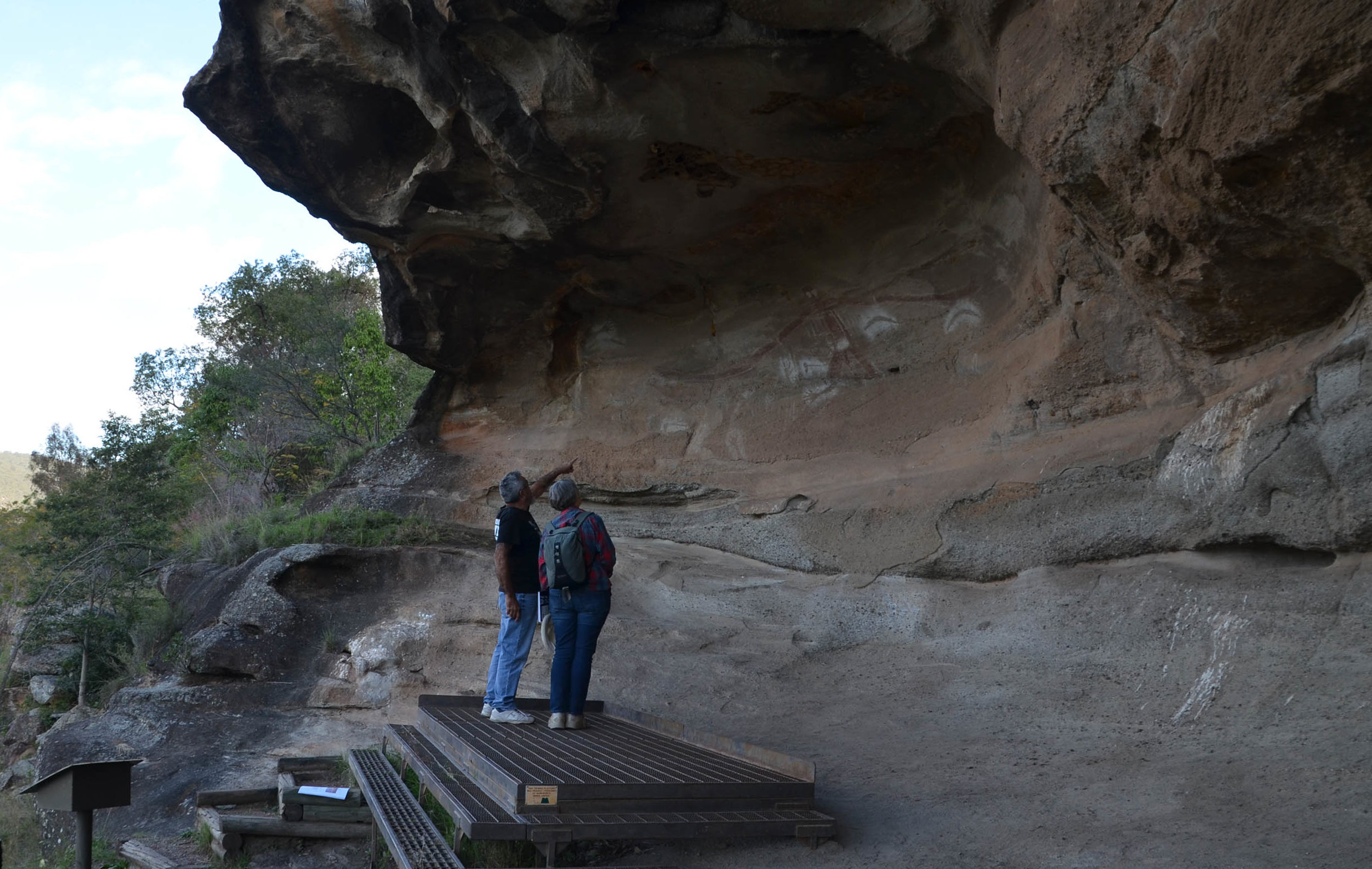
Baiame Cave: Building Resilience
To the Aboriginal people on the east coast of Australia, Baiame is the creator.
At Baiame Cave, in the Upper Hunter Valley, Baiame is depicted on the rear wall of an overhanging rock shelter. He is rendered in red and white pigment as a large male figure with large eyes and elongated arms. Baiame is surrounded by other motifs including hand prints, a hatchet and boomerangs.
Baiame Cave is a place of immense cultural significance to the people of the Wonnarua Nation and other Aboriginal people in the Upper Hunter region and beyond. The cave is heritage listed and located on a working family farm.
To conserve the place’s significance a Conservation Management Plan (CMP) has been prepared. GML developed the CMP collaboratively with Stepwise Heritage and Tourism Pty Ltd (Stepwise) and the Baiame Cave Working Group comprising the landowners, local Wonnarua people, key tourism stakeholders and the Office of Environment and Heritage. Issues such as accessibility, environmental threats, visitation, facilities, education, public safety and engagement were workshopped and discussed with the community representatives, the landowner and other key stakeholders.
The CMP is an example of community-centred planning and management. The Aboriginal community provide direction and make decisions about the place with the landowners. The collective knowledge of the group and perspectives provided throughout the planning process ensured the plan’s policy settings were well-founded.
GML’s Catherine Forbes presented a paper, co-authored by Tim Owen and Sharon Veale, to the 8th International Building Resilience Conference in Lisbon. From the feedback we received, it was clear that collaborative planning process and plan itself was of interest to the international audience.




